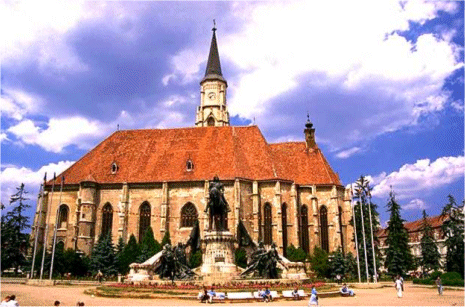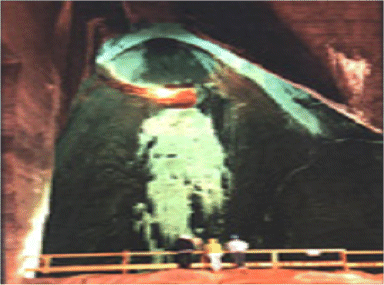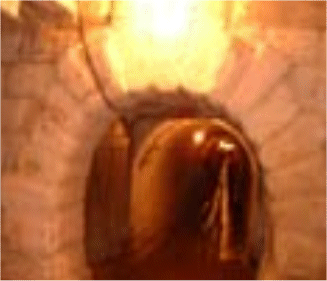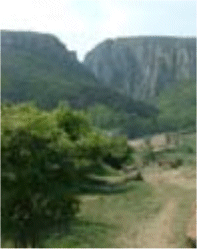|
|
|
Wens-Tour ticketing&travel agency offers the following social program to the participants of CAPE Forum 2005:
|
|
|
|
|
|
|
City tour |
The tour begins in Unirii Square, where we can see the equestrian statue of Matei Corvin and St. Michael Cathedral. The cathedral is one of the most beautiful monuments in gothic style of Transylvania.
 The construction took place between 1350-1487. The church was built on the remainings of the old chapel St. Jacob. The altar represents the oldest part of the construction, being built arund the year 1390. The newest part of the cathedral is its tower, built in neogothic style. The ceiling, stained-glass window and sculptures impose themselves through beauty and greatness. Numerous restaurations revealed mural paintings executed in the first part of the 15th century. The last restauration of the church took place between 1957-1960.
The construction took place between 1350-1487. The church was built on the remainings of the old chapel St. Jacob. The altar represents the oldest part of the construction, being built arund the year 1390. The newest part of the cathedral is its tower, built in neogothic style. The ceiling, stained-glass window and sculptures impose themselves through beauty and greatness. Numerous restaurations revealed mural paintings executed in the first part of the 15th century. The last restauration of the church took place between 1957-1960.
The statue in front of the cathedral represents prince Matei Corvin, the son of Iancu de Hunedoara, and was created by Fadrusz Janos as an homage to this important personality for the destiny of Transylvania. Due to its location and estetics, the statue gained the title as the emblem of the city, being present in all the photos taken by the tourists that visit the city.
Here you can also see the National Art Museum. It is the most representative building in baroque style from Transylvania, built between 1774-1775. The Museum is also known as the Banffy Palace. The museum has a collection of decorative art (silverware, oriental carpets, antique furniture, contemporary graphic works, both Romanian and foreign).
Just a few steps farther, there is Iuliu Maniu street, famous due to its buildings. Also known as the "mirror street", being mentioned in the Guiness Book, all the constructions on one side find their identical correspondent on the other side.
The tour continues with a visit at The Memorial House of Matei Corvin. The house was built in gothic style in the 15th century, being the only edifice from that period that is now in good condition. It is assumed that in this building Matei Corvin was born in February 23rd, 1440. Built before 1440, the construction suffered numerous transformations; today, only the main facade keeps elements that belong to the Renaissance Period. Today it is the host of the Art School's students.
The tour continues wuth University Street, where we can find St. Anthony's Church, built between 1718-1724, a large dimensions construction, built in the baroque style. We wil be able to see from the coach the Babes-Bolyai  University building, on Kogalniceanu street, (1893-1903), a work of the architect Carol Meixner. Babes Bolyai is the largest University in Transilvania, and one of the first in the country. Its name comes from the scientists Victor Babes and Bolyai Janos, something that is reflected in one of the present characteristics of the university: multiculturalism. University building, on Kogalniceanu street, (1893-1903), a work of the architect Carol Meixner. Babes Bolyai is the largest University in Transilvania, and one of the first in the country. Its name comes from the scientists Victor Babes and Bolyai Janos, something that is reflected in one of the present characteristics of the university: multiculturalism.
We will pass by the Cluj Philarmonic Orchestra, and at the end of the street we will admire St. George's Statue in its fight against the dragon. This is only a copy, the original being at Brussels.
The Reformed Church - Kogalniceanu Street. Its construction began in 1486, with King Matei Corvin's support and it was finished around the year 1510. The church, situated on the east-west direction, reflects the features of the late gothic style. Due to the fights in the reform era, the church was abandoned until the middle of the 16th century. In 1579, prince Bathory decided that the church should be administrated by the jesuits. In 1622, when at Cluj took place The Dieta, it was decided that the church would be given to the reformed people. The church arch was renovated between 1638-1645. During this time, the southern tower was demolished and the monastery destroyed. The church is a unique monument not only due to its age, but also due to its dimensions, being one of the biggest churches in South- Eastern Europe.
|

Top
|
Close by we can see the remainings of the Cluj medieval fortress walls. The fortress was protected by the bastions and their administration given to the craftsmen guilds. In a very good condition it is the Taylors Bastion, situated in the SE of the fortress. In front of the bastion there is the statue of one of Mihai Viteazu 's most beloved subjects. Baba Novac.
In Avram Iancu Square we can admire the National Theatre and Avram Iancu's statue.
The Orthodox Cathedral. The construction was very difficult and lasted 10 years (1923-1933). Financial support was given by almost every romanian citizen. In the same time was painted a part of the Cathedral, by Gh. Rusu, Anastasie Demian si Catul Bogdan. In the summer of 1933 a series of works were finished in the inside and the outside part of the cathedral.
The last sightseeing point is Cetatuia Hill, where we can see the whole city view. It is the ideal place for unforgettable photos.
|
|
|
|
|
The Salt Mine |
We will be leaving from Cluj at 10:00 and will arrive in Turda at approx. 11:00 where we can visit the fantastic salt mine, one of the largest in Europe.
 Turda's salt deposit has been known and exploited by ancient times, but it was put into systematic operation of the deposit, by underground mining work, during the Roman conquest in Dacia.
Turda's salt deposit has been known and exploited by ancient times, but it was put into systematic operation of the deposit, by underground mining work, during the Roman conquest in Dacia.
The salt was extracted as clods which were then cut by specialist workers. The mines were lit by candles and tallow rush lights; explosives were never used for exploitation nor mechanical equipment used for cutting the salt.
Salt was exploited in rooms of 17-34 m (56-112 feet) depth and 10-12 m (33-39 feet) width, disposed one near the
other an separated by a safety consolidation.
|

Top
|
 The salt mine has been opened to tourists and is well worth a visit; a 300 m-long gallery leads to huge hangar-like chambers, gradually excavated over 250 years, with stout wooden staircases leading even further downwards.
The salt mine has been opened to tourists and is well worth a visit; a 300 m-long gallery leads to huge hangar-like chambers, gradually excavated over 250 years, with stout wooden staircases leading even further downwards.
By its impressive galleries, long tunnels and mining system, great acoustics and very healthy microclimate, Turda Salt Mine is an excellent destination for every tourist.
At 15:00 we will have lunch and then we will return to Cluj, where we will arrive at approx. 17:00.
|
|
|
|
|
Turda Gorge |
We will have breakfast at 10:00 and then we will be leaving for Turda.
Turda Gorge (35 km away from Cluj)- A natural reservation, and a botanically and geologically unique treasure. The gorges are a result of the Hasdate River cutting its way through the limey rocks of the Culmea Petridului peak. They spread over 2 km along the river.
|

Top
|
 Turda Gorge is just a half an hour drive from the Salt Mine. A beautiful natural reserve with a unique Turda Gorge is just a half an hour drive from the Salt Mine. A beautiful natural reserve with a unique  landscape, it is 1.5 km long and has almost vertical, up to 300 m high walls. Turda Gorge is one of the most popular attractions in the Apuseni Mountains. landscape, it is 1.5 km long and has almost vertical, up to 300 m high walls. Turda Gorge is one of the most popular attractions in the Apuseni Mountains.
The gorges are of special interest because of their morphologic variety: caves, fossils, towers, and arcades formed by the river's repeated attempts to penetrate the limestone mountain. The natural reserve was founded in 1938 and almost 1000 special plants live there. Also, the entrances of more than 60 caves can be seen on the walls.
Turda Gorge is an excellent place for free climbing, having more than 100 routes, for all difficulty levels. The varieties of routes rank Cheile Turzii as one of the top areas among the climbing sights in Romania.
At 15:00 we will have lunch and then we will be leaving for Cluj where we will arrive at approx. 17:00.
|
|
|
last revision: February 19, 2005
|